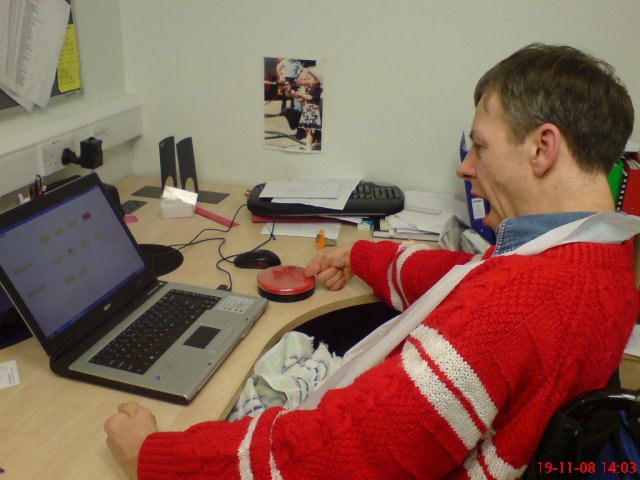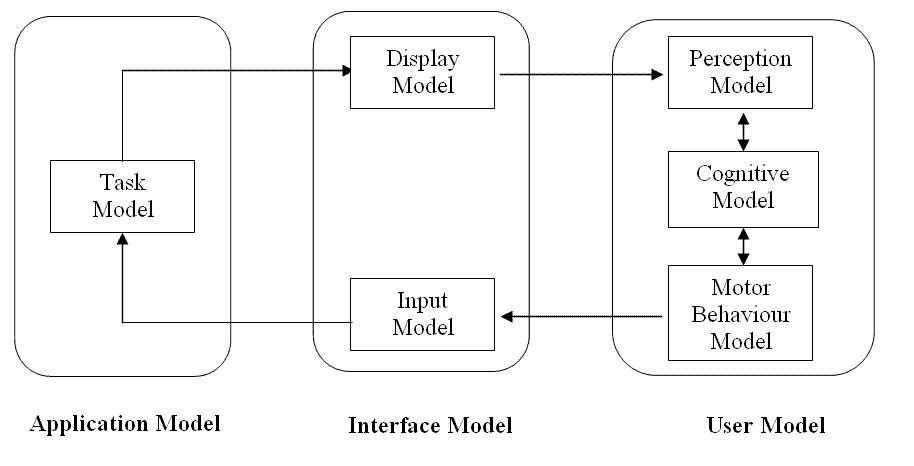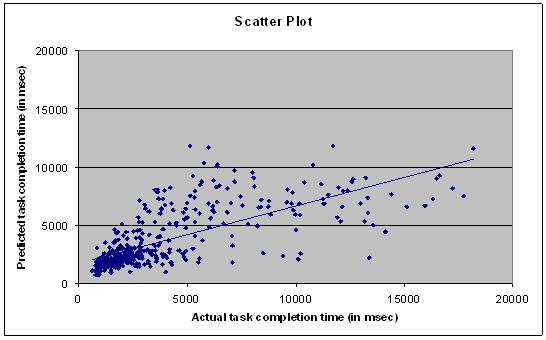Inclusive user interfaces
Pradipta Biswas & Peter Robinson

A scanning interface using a single switch
|

Architecture of the simulator
|

Scatter plot comparing predicted and actual times
|
Many computer systems exclude potential users unnecessarily. Such exclusion often arises because of a mismatch between designers’ perceptions of the wants and needs of the end-user and their actual wants and needs. Sometimes the mismatch originates from the designer being unaware of the need to design inclusively, or of methods for implementing inclusive design. Accessible user interfaces make computers easily usable by people with disabilities involving physical or visual handicaps.
Our research has developed new techniques for characterising the interaction styles of a broad range of users, and then investigated novel interaction techniques to suit individual users.
User modelling
We have developed a simulator to investigate how physical impairment affects human computer interaction. This can predict possible interaction patterns when undertaking a task using a variety of input devices, and estimate the time to complete a task in the presence of different disabilities and for different levels of skill. The system complements existing methods of usability evaluation, and should help designers to develop inclusive computer systems.
The simulator consists of three components:
- The Application Model represents the tasks undertaken by users and decomposes them into atomic units.
- The Interface Model considers the input and output devices to be used and represents their characteristics.
- The User Model simulates the interaction patterns of users. This considers:
- perception of visually impaired users by investigating their eye-gaze patterns
- cognition of novices by using a dual-space model
- motor-skill of motor-impaired users indicated by their grip strength and range of motion of different joints.
We have evaluated the predictive power of the simulator and demonstrated its use for selecting between alternative designs and developing new techniques for interaction.
Other contributors
- Silas Brown
- Gregory Hughes
- Simeon Keates
